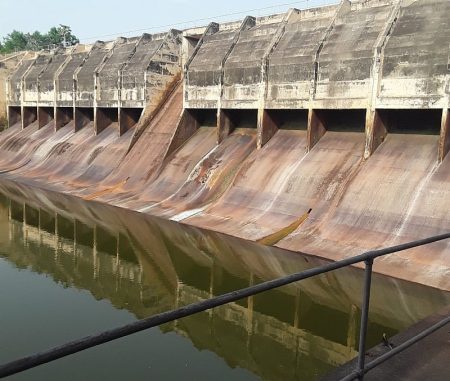2023-2024 Ghana National Fire Service (GNFS) Performance Report Summary
The Ghana National Fire Service (GNFS) released its comparative report for the years 2023 and 2024, showcasing a mixed bag of achievements and challenges in fire prevention and emergency response. While the GNFS demonstrated significant success in saving properties worth over GHC 550 million in 2024, a notable rise in fire incidents necessitates intensified efforts in fire safety education and resource allocation. The report sheds light on the primary causes of fires, regional variations in fire incidents, the effectiveness of current interventions, and the GNFS’s commitment to enhancing public safety.
The key findings of the report reveal a 7.8% increase in fire incidents from 2023 to 2024, attributed primarily to harsh weather conditions and lapses in fire safety compliance. Electrical faults, gas leakages, indiscriminate burning, misuse of naked lights, and natural events like lightning were identified as major fire causes. Despite the rise in incidents, the GNFS achieved considerable success in salvaging properties, recording a 159.8% increase in the value of saved assets, reaching GHC 550 million in 2024. However, the cost of damages also saw a 51.9% rise, emphasizing the need for strengthened fire prevention strategies and enhanced emergency response capabilities.
The report highlights the regional distribution of fire incidents, with Greater Accra experiencing the highest number, followed by Ashanti and Eastern regions. The North East region recorded the lowest number of incidents. Analysis of fire types revealed a decrease in domestic fires, balanced by increases in commercial, bush, and electrical installation fires. Vehicular and industrial fire proportions remained constant. A slight increase in "Out-On-Arrival" (OOA) fire cases, where fires were extinguished before GNFS arrival, highlights the positive impact of public fire safety education. The GNFS aims to further increase OOA cases through intensified public awareness campaigns.
A positive trend emerged in fire-related deaths and injuries, showing a 7.41% and 50% decrease, respectively. These reductions are attributed to improved fire safety measures and quicker emergency response. The report also documented a slight decrease in Road Traffic Collision (RTC) cases, coupled with a significant 15.7% reduction in RTC-related deaths. This success points towards the effectiveness of road safety measures and emergency response efforts. However, a marginal increase in RTC-related injuries emphasizes the need for continuous improvement in road safety education and emergency response.
Other rescue operations, including responses to bee attacks, structural collapses, and rescues from heights, saw a decline, along with a significant reduction in related injuries and deaths. These positive trends reflect the GNFS’s success in implementing effective safety measures and rescue protocols. The report emphasizes the GNFS’s improved fire management strategies as a key factor in preventing more extensive damage despite the rise in incidents. The success in salvaging properties and the increasing trend of OOA cases underscore the effectiveness of public fire safety education and community preparedness.
The GNFS outlines its commitment to intensifying public fire safety campaigns across various platforms, targeting residential areas, worship centers, markets, and institutions. Increased fire safety audits and inspections in commercial premises aim to identify and mitigate fire hazards. The GNFS plans to train more community fire volunteers to prevent and control bushfires through climate-resilient strategies. Collaboration with the National Road Safety Authority and other relevant institutions will focus on enhancing road safety education and minimizing road crashes.
The GNFS attributes its success to several key factors. Improved fire management strategies have resulted in a higher rate of salvaged properties, even with the increased number of incidents. Public fire safety education plays a crucial role, empowering citizens to extinguish fires before the arrival of GNFS personnel, as evidenced by the rise in OOA cases. Furthermore, the decrease in fire-related deaths and injuries reflects the effectiveness of improved fire safety measures and faster emergency response times.
Looking ahead, the GNFS remains committed to advancing fire safety education and improving its response strategies. This commitment involves strengthening public awareness campaigns, conducting thorough fire safety audits, training community fire volunteers, and collaborating with other institutions to enhance road safety. By addressing these areas, the GNFS aims to further reduce fire incidents, minimize damages, and protect lives, property, and the environment. The continued focus on these strategic interventions promises a safer future for Ghana.
The report’s detailed analysis of fire trends, causes, and regional performance provides valuable insights for developing targeted interventions. The identification of electrical faults, gas leaks, and improper use of fire sources as leading causes allows for focused public awareness campaigns. The regional variations in fire incidents enable the strategic deployment of resources and personnel to areas with the highest risk. The data on fire types further refine the GNFS’s approach, allowing for specialized training and equipment allocation.
The GNFS’s commitment to strengthening public fire safety education is commendable. Targeting residential areas, worship centers, markets, and institutions ensures a broad reach of crucial safety information. The increased fire safety audits and inspections in commercial premises act as a proactive measure to prevent potential hazards. Training community fire volunteers empowers local communities to take ownership of fire prevention, creating a more resilient and responsive network.
Collaboration with the National Road Safety Authority and other institutions is crucial for addressing the complex issue of road traffic collisions. Intensified road safety education and efforts to minimize road crashes contribute significantly to overall public safety. The GNFS’s commitment to adhering to international response time standards further demonstrates its dedication to providing timely and effective emergency services.
The positive trends observed in the report, such as the decrease in fire-related deaths and injuries, underscore the effectiveness of current strategies. However, the rise in fire incidents necessitates continued vigilance and adaptation. Harsh weather conditions and lapses in fire safety compliance require proactive measures, including strengthening building codes and enforcing safety regulations. Investment in modern fire and rescue equipment, expanding fire station coverage, and ensuring adequate personal protective equipment are essential for enhancing the GNFS’s capacity to respond effectively. The reduction in RTC-related deaths is encouraging, but the slight increase in injuries suggests the need for more comprehensive road safety initiatives.
The GNFS’s commitment to public safety is evident in its comprehensive approach to fire prevention, emergency response, and community engagement. By continuing to refine its strategies, invest in resources, and collaborate with other stakeholders, the GNFS can further minimize the risks associated with fire incidents and other emergencies, safeguarding lives, property, and the environment.














